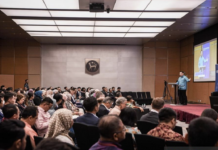KUALA LUMPUR, Jan 24 –Tomorrow marks a year since the COVID-19 pandemic hit the country with the first case involving three Chinese nationals who entered Malaysia via Johor from Singapore on Jan 20, 2020.
During the first wave, majority of the COVID-19 cases were imported and did not involve Malaysians, while the infection during the second wave involved local transmission with the first case reported on Feb 4, 2020.
It was during the second wave that the government imposed the Movement Control Order (MCO), beginning March 18 with strict standard operating procedures (SOP) and a few months later, when the infection showed a declining trend, the government loosened the SOP slightly with the introduction of the Conditional MCO (CMCO) from May 4 May, followed by the Recovery MCO (RMCO) on June 10.
However, due to some complacency, the virus returned to terror for the third wave and the government had to re-enforce the RMCO in most states beginning last October, and when the number of cases kept increasing, the government had to re-enforce the MCO, starting with six states and subsequently, nationwide, except Sarawak.
As of yesterday (Jan 23), the cumulative number of cases reported was 180,455, with 42,769 active cases, meaning the country is expected to continue to record high daily figures.
A total of 667 deaths due to COVID-19 have been recorded so far.
One thing that should be acknowledged is that the government has implemented various initiatives, advocacy and regulations in the country on the advice of the Health Ministry (MOH), whereby during this period, Malaysians are informed almost every day on the latest developments pertaining to the COVID-19 infection, especially by Senior Minister (Cluster Security) Datuk Seri Ismail Sabri Yaakob and Health director-general Tan Sri Dr Noor Hisham Abdullah.
It has been a year, issues on COVID-19 pose a main challenge to the country, not only in terms of health, but its impact on the economy.



















